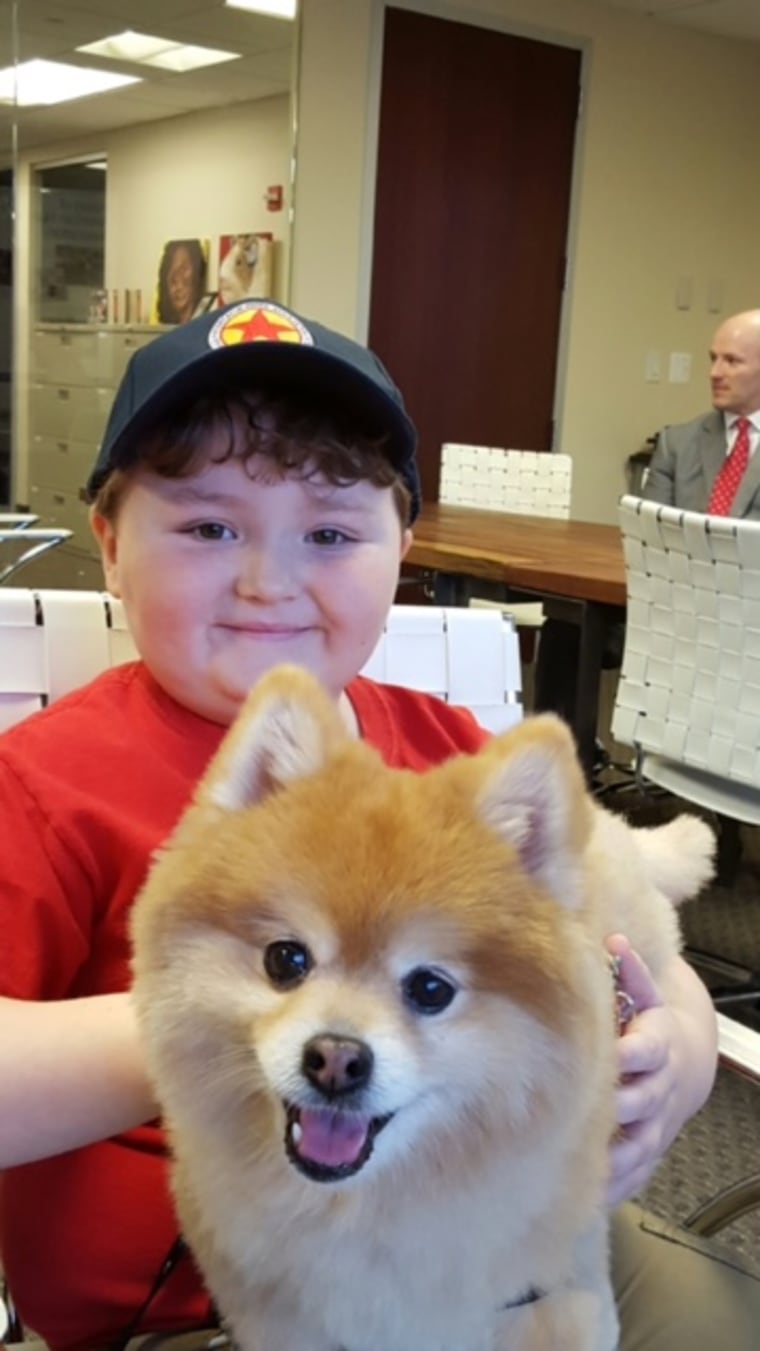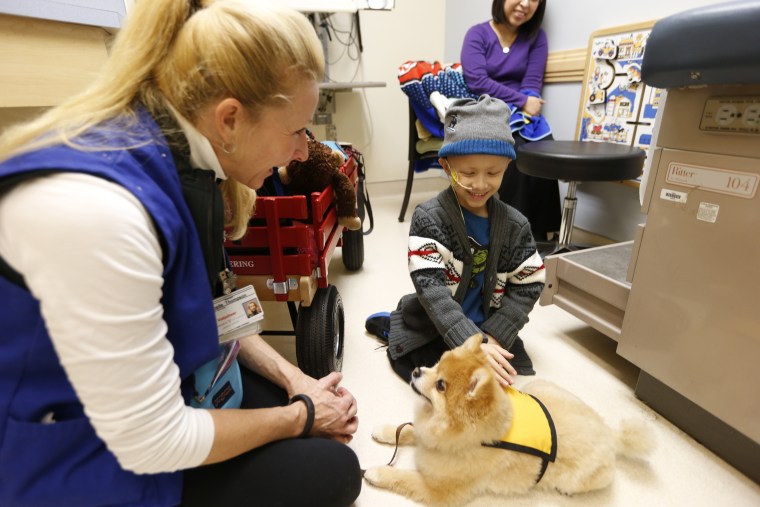When the littlest patients battle cancer, more hospitals are now opening their doors to specially-trained dogs in the hopes a wagging tail, soft fur and playful paws can help kids in the way conventional drugs can’t.
But how effective is animal therapy in such cases? New research by American Humane and several children’s hospitals, believed to be the first and largest randomized controlled study on the subject, had some unexpected results.
Kids who had regular visits from a therapy dog while undergoing cancer treatment worried less about their health and felt more comfortable about their school performance, but had the same overall stress and anxiety levels as pediatric cancer patients who didn’t spend any time with therapy dogs.
Parents of the kids who visited the furry therapists, however, showed “significantly decreased” stress levels, especially when talking with doctors, thinking about their child’s treatment and considering their overall emotional state, researchers found. The effect likely trickles down to the entire family, said Amy McCullough, the study’s principal investigator and a national director at American Humane.
“Seeing their child comforted by a therapy dog helped reduce the emotional distress for parents. So it’s something that the whole family can improve from,” McCullough told TODAY. “When the parents are benefiting, it’s likely that the child is benefiting as well.”

The study involved 106 cancer patients 3 to 17 years old and took place at five pediatric hospitals in the U.S. When they were newly diagnosed, some children were randomly selected to receive weekly visits from a therapy dog and its handler in addition to their standard cancer treatment. They could pet, brush, talk to, walk and play with the dog during the 10-20 minute sessions.
Other children received standard care only.
Over four months, the researchers used special questionnaires to regularly measure stress and anxiety levels in all of the children and their parents. They also measured the therapy dogs’ stress levels by observing their behavior during the sessions and measuring the cortisol levels — a stress marker — in their saliva.

The results? All of the children’s stress levels went down over time, regardless of whether they saw a therapy dog or not, likely because they were getting more used to their “new normal” of coming into the clinic and getting treatment, McCullough said. But the researchers were surprised that the kids who spent time with therapy dogs didn’t see “significantly greater improvement” than the other children. The kids who spent time with dogs also had a higher heart rate and higher blood pressure after the visits, likely because they were more active with the dogs, McCullough noted.
Their parents showed the biggest changes, with some of their stress levels “significantly improved with time,” the study found. That’s important because when one member of the family is improving, that has an effect on every member of the family, she said.

The therapy animals did well, too.
“We’re thrilled to also be able to report that these sessions are not harmful or stressful for the dogs,” McCullough said.
“There were also no adverse events reported. No reports of a bite or scratch or infection caused by the dogs. That tells us that with proper safety protocols in place, this can really be a great intervention that can benefit the entire family.”